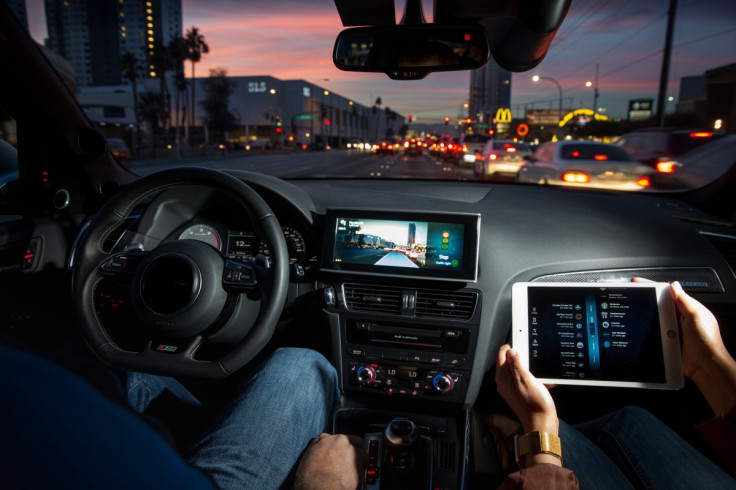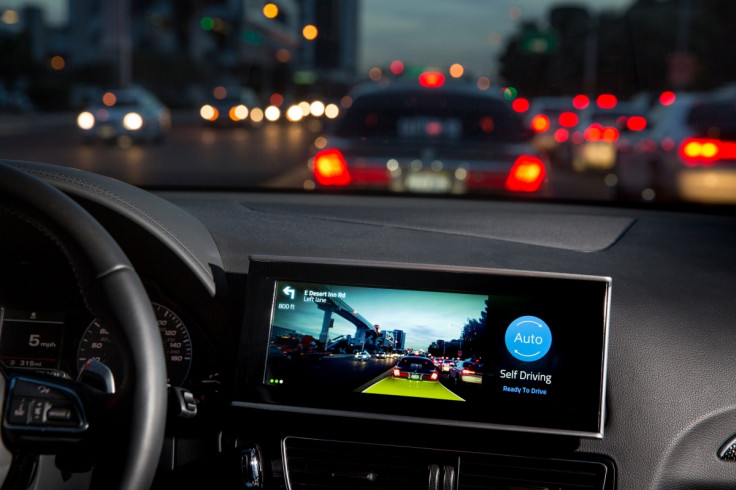CES 2016: Delphi debuts futuristic 'vehicle-to-everything' system to make self-driving cars a step closer

UK-based car technology company Delphi is showcasing a new system called "vehicle-to-everything" (V2E) at the Consumer Electronics Show (CES) 2016. It claims to broaden the Internet of Things (IoT) concept to enable its cars to communicate with all types of objects that might impact the driver's experience.
IoT refers to smart devices that wirelessly send information back to a computer server or smartphone app to help people make better decisions, keep tabs on machines to prevent problems and better use their resources.
Gartner estimates that there are currently 1.1 billion connected devices being used to create smart cities around the world, and this figure will rise dramatically to 9.7 billion by 2020.
Car can automatically avoid people and other vehicles
Gillingham, UK-based Delphi's V2E system uses advanced software and hardware to enable Delphi cars to communicate with other vehicles so that your car knows instantly if another car suddenly swerves into your lane, and can calculate how to move in order to avoid an accident.
The firm is also debuting an aftermarket vehicle-to-vehicle (V2V) unit that can enable all vehicles equipped with it to talk to each other, even if the unit wasn't installed in the factory when the car was built, and General Motors has decided to put the technology in its 2017 Cadillac CTS.
The system also enables the car to talk to traffic lights, so that the car can anticipate yellow and red lights and perhaps take an alternative route to avoid them. Even more importantly, V2E helps manage blind corners by giving the driver data about opposing traffic in a situation where the streets are intersecting at strange angles.
Finally, the V2E system also interacts with humans – users can offer their friends impromptu rides as the car notifies friends of the driver's location, and Delphi has created a chip that, once embedded in smartphones, alerts the car if a pedestrian strays onto the road and isn't paying attention to oncoming traffic.
But self-driving cars are still a far-off dream

Many of the ideas being showcased by Delphi are also being thought up by telecommunications provider Ericsson, which envisions that self-driving cars will be able to communicate with absolutely everything once 5G mobile networks are in place.
On 5 January, the CEO of Toyota's research institute Gill Pratt told the audience at CES that it will take a very long time before self-driving cars can become a reality as most of the science needed to make the technology possible has yet to be figured out, according to Geek Wire.
"Despite the tremendously wonderful progress that you will see [at CES 2016], most of what has been collectively accomplished by all of us working in this field has actually been relatively easy. And the reason that it is easy is that most driving is easy," said Pratt, who was formerly an MIT professor and a project manager for Darpa.
"So, where we need help in autonomy and where we really need autonomy to help us the most is actually not when driving is easy. We know how to drive when driving is easy. We can do it when we are half-paying attention… We need to not only solve driving when it is easy, we need to solve driving when it is hard, when it is difficult."
Although in April 2015 Delphi successfully demonstrated that an Audi Q5 could autonomously drive itself from San Francisco to New York, the firm admits that it will still take a long time to make self-driving a concrete reality, but if its system works as it says it does, then it could potentially open a door to the future.
"We imagine a world with zero traffic accidents," said Jeff Owens, Delphi chief technology officer. "To get there we will need a convergence of active safety, sensor fusion, connectivity platforms and advanced software."
© Copyright IBTimes 2025. All rights reserved.






















